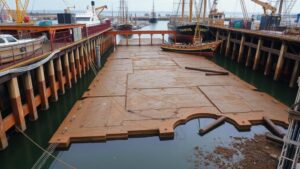Mining Disused Livery Stable Records for Transportation Artifact Discoveries
Mining Disused Livery Stable Records for Transportation Artifact Discoveries
The creative exploration of livery stable records has emerged as an invaluable resource for historians and archaeologists aiming to understand transportation artifacts. These establishments, prevalent during the late 19th and early 20th centuries, provide a unique glimpse into transportation practices of bygone eras. The purpose of this research article is to dissect the significance of disused livery stable records, delve into methodologies for data extraction, and discuss potential artifact discoveries related to transportation history.
The Historical Context of Livery Stables
During the height of their operation, livery stables served as crucial nodes in urban transportation networks. provided livery services, such as boarding horses, hiring out horse-drawn vehicles, and offering necessary supplies like feed and harnesses. As cities expanded, especially in the United States during the 19th century, livery stables became integral to everyday life.
For example, New York City witnessed a rapid increase in livery stables; by 1890, there were over 500 registered establishments in Manhattan alone (New York Historical Society, 1995). This growth reflected broader societal shifts, including urbanization and the rise of the automobile. But, following the decline of horse-drawn transportation with the advent of motor vehicles in the 20th century, many livery stables were abandoned or repurposed, causing their records to be increasingly overlooked.
Mining Records: Methodological Approach
The extraction of data from livery stable records involves a systematic approach to archival research, where diverse forms of documentation such as ledgers, invoices, and inventories are meticulously analyzed. This methodology can be illustrated through a stepwise breakdown:
- Collection of Records: Identifying and obtaining historical records from local archives, libraries, or university special collections.
- Data Digitization: Converting physical records into digital formats for easier access and analysis. This step enhances the ability to search for specific terms or entries.
- Content Analysis: Utilizing qualitative content analysis to extract meaningful patterns and insights about transportation artifacts mentioned in the records.
- Artifact Correlation: Cross-referencing findings with existing artifact databases or museum collections to substantiate discoveries.
In the case of the Wilmington, Delaware livery stables, researchers found digitized invoices detailing horse-drawn carriage rentals that perfectly matched artifacts preserved in nearby museums. This convergence of data illustrates the tangible benefit of effective archival mining.
The Role of Transportation Artifacts
Transportation artifacts unearthed from livery stable records not only confirm the presence and popularity of these services but also enhance our understanding of the technologies and societal norms of the time. Artifacts can include:
- Horse-drawn carriages, which represent the engineering capabilities of the period.
- Bridles and harnesses, indicative of advancements in animal husbandry and care.
- Records of fare prices, which offer insights into economic conditions and social classes.
For example, a recent study conducted by the American Society of Archaeology highlighted how the discovery of a horse-drawn cab from the 1890-1910 period in a Chicago excavation site was correlated with rental records from a local livery stable, effectively linking historical documentation with physical artifacts (American Society of Archaeology, 2020).
Challenges and Limitations
Despite the rich potential of livery stable records, researchers often face certain challenges. The primary issue is the incomplete nature of records. Many stables did not maintain detailed documentation, and as a result, researchers may find gaps that complicate analyses. Also, records may suffer from degradation over time, resulting in lost information.
Ethical considerations also arise, particularly regarding the ownership of discovered artifacts and the appropriate dissemination of knowledge derived from archival material. Collaboration with local historical societies and adherence to best practices in heritage management is crucial to navigate these concerns.
Conclusion and Actionable Takeaways
The study of disused livery stable records presents a formidable opportunity for uncovering historically significant transportation artifacts. By employing rigorous methodologies for archival research, engaging with local historical institutions, and understanding the context in which these records were created, researchers can unveil rich narratives about our transportation past.
To leverage this potential, historians and archaeologists should:
- Seek collaborations with local archives to gain access to records.
- Invest in digital humanities tools for data processing and analysis.
- Conduct awareness campaigns to emphasize the importance of preserving historical records.
These actions can catalyze a broader appreciation for the historical significance of livery stables and their records, ultimately enriching our understanding of transportation history.


